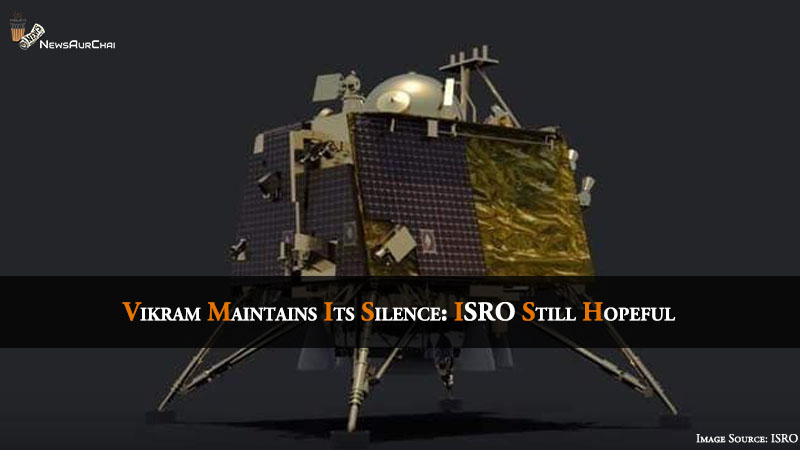Vikram Maintains Its Silence: ISRO Still Hopeful

India has a great history of space programmes. Starting from the first satellite launched by India, ‘Aryabhatta’ in the year 1975 to the latest moon mission. One of the recent addition to the space mission is that of the ISRO‘s Chandrayaan- 2. It included an orbiter, a lander (Vikram) and a rover (Pragyan), all designed by India.
The orbiter is equipped with high-resolution cameras, best used in such missions till now. Also, Vikram is installed with solar panels to be able to generate the energy required for the completion of this mission.
The journey of Vikram
The Chandrayaan-2 was successfully launched on July 22nd, 2019. It was a moment of pride for all the Indians. Subsequently, it was successfully placed in the intended orbit, about 100 km from the Moon. On September 7th the lander was supposed to make a soft landing on the south pole of the lunar surface. However, due to some technical glitches, it ended up landing hard on the surface of the Moon.
The lander, Vikram, lost its communication with the stations during the final landing on the lunar surface, just 2.1 km above the lunar south pole. According to the officials, there might have been some issues in the judgement of the lunar environment. Hence the lander could not reduce its speed necessary for the landing.
It was quite an emotional moment for the entire nation, and especially for the ISRO officials who had worked day and night to accomplish this. After a few attempts, to re-establish communication, each person present at the ISRO control room in Bengaluru, along with Prime Minister Narendra Modi, was left in despair and had moist eyes.
The officials are still hoping and trying their best to have a little progress towards any sort of communication possible. Furthermore, the primary concern is that the lunar night will start in 14 days after September 7th, after which lander will not be able to generate any energy. So, the next 3-4 days are very crucial.
One positive note is that 90 to 95% of the objectives of the Chandrayaan-2 mission have been accomplished. The lander has been located on the moon surface by the orbiter. It has been ascertained that it did not crash and break into pieces but has landed in one piece. It has fallen about 500m away from the desired spot.
As the days pass by the hopes of scientists to restore the link with lander Vikram seems to fade. ISRO official stated that “hard-landing” of Vikram on the lunar surface had made the task of re-establishing connection that much difficult as it may not have the right orientation” and may not have landed on it four legs.





